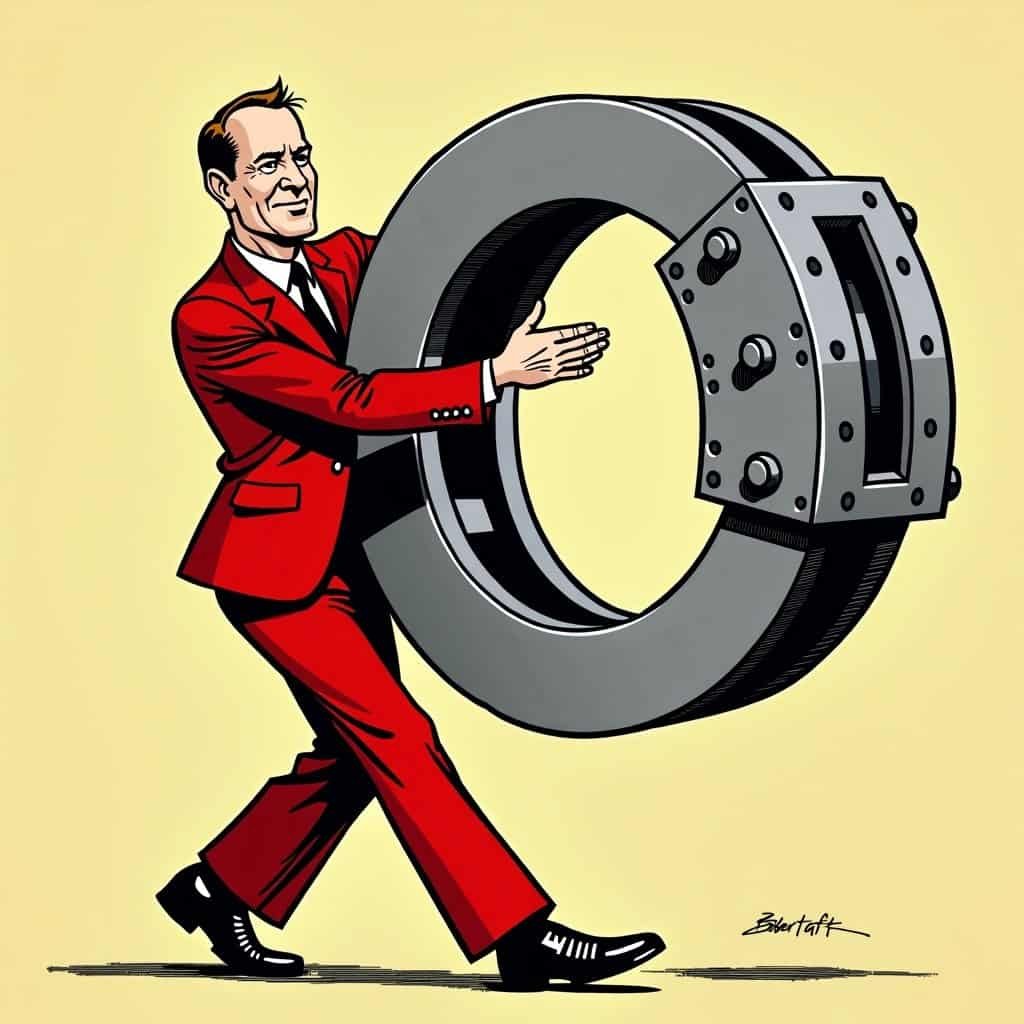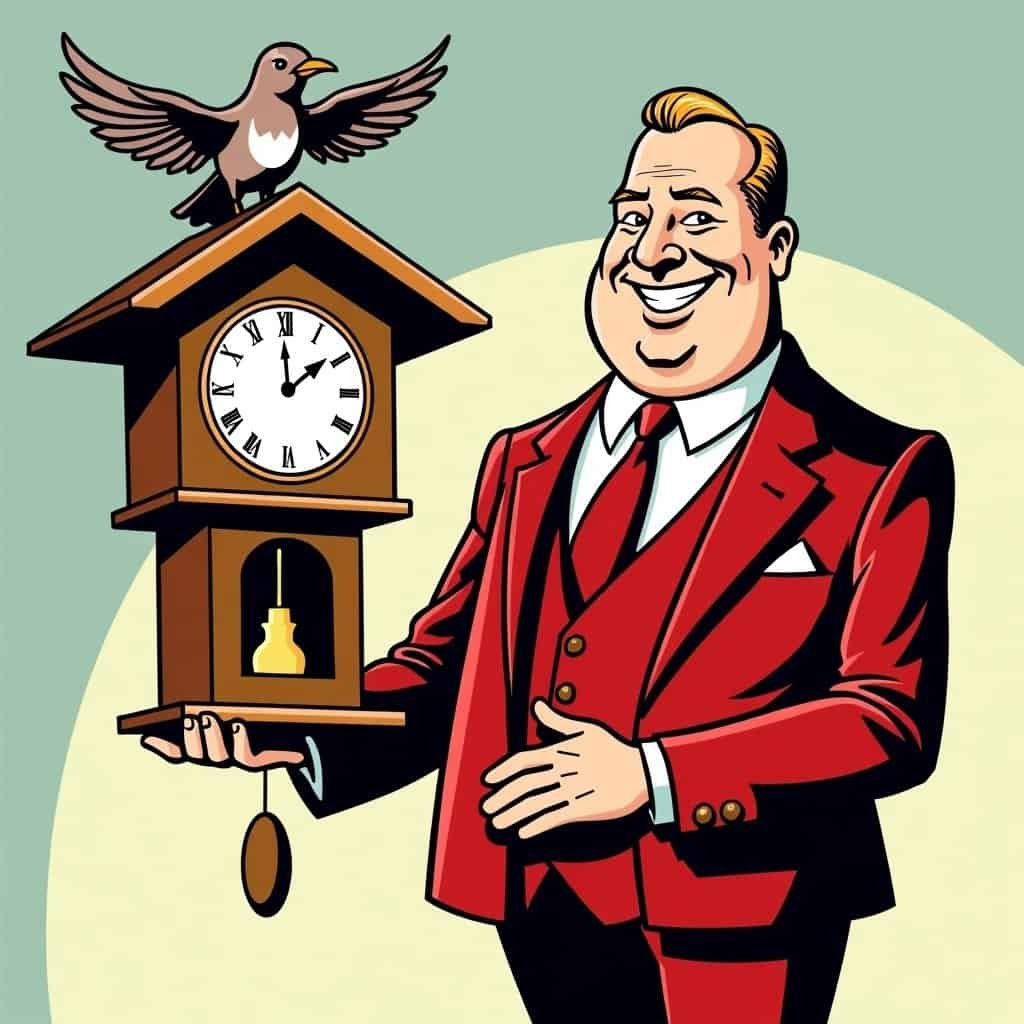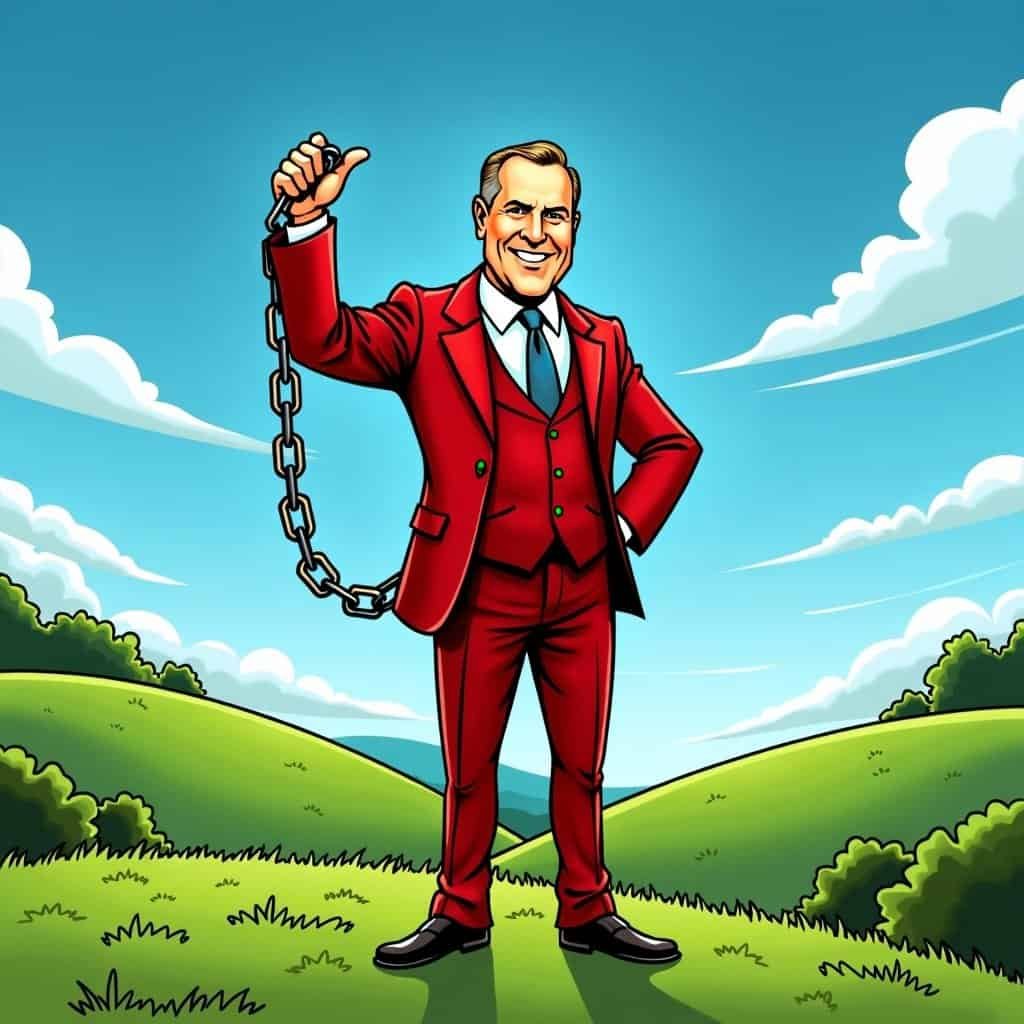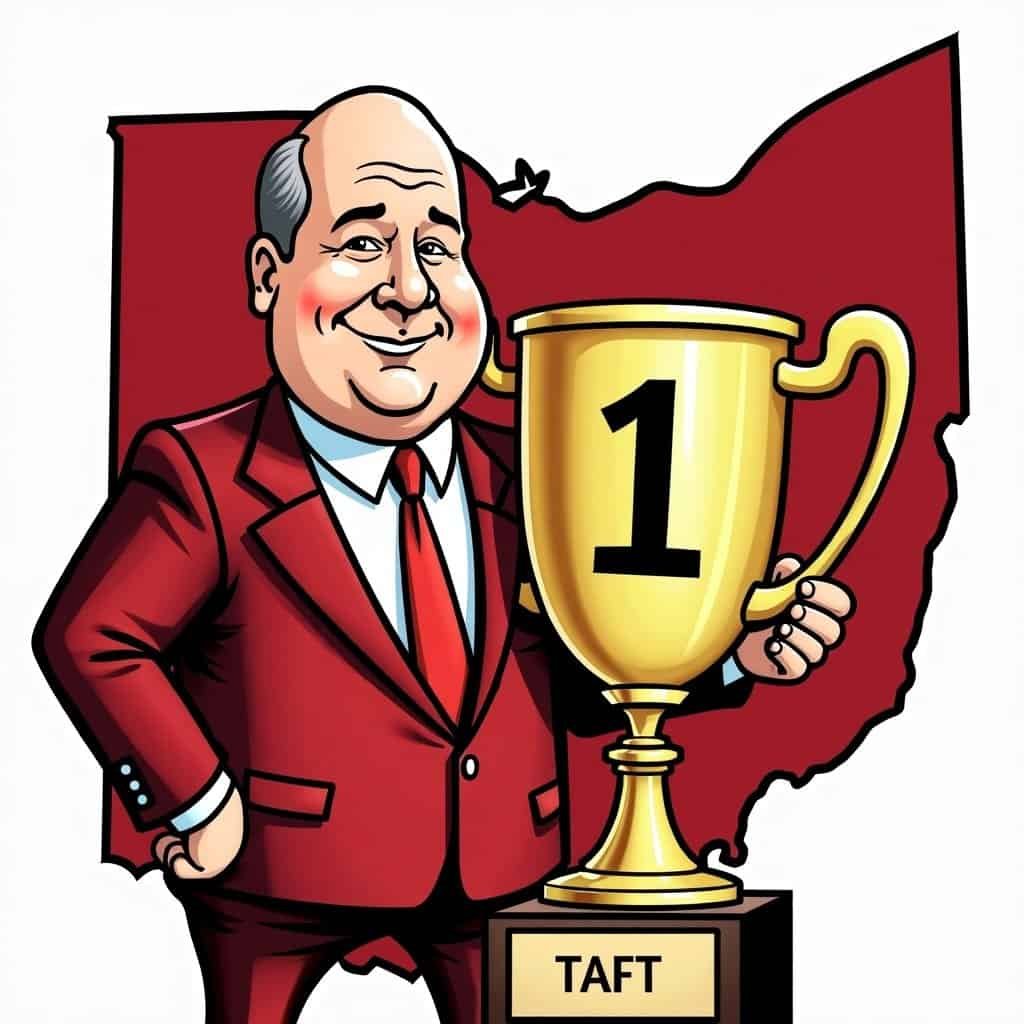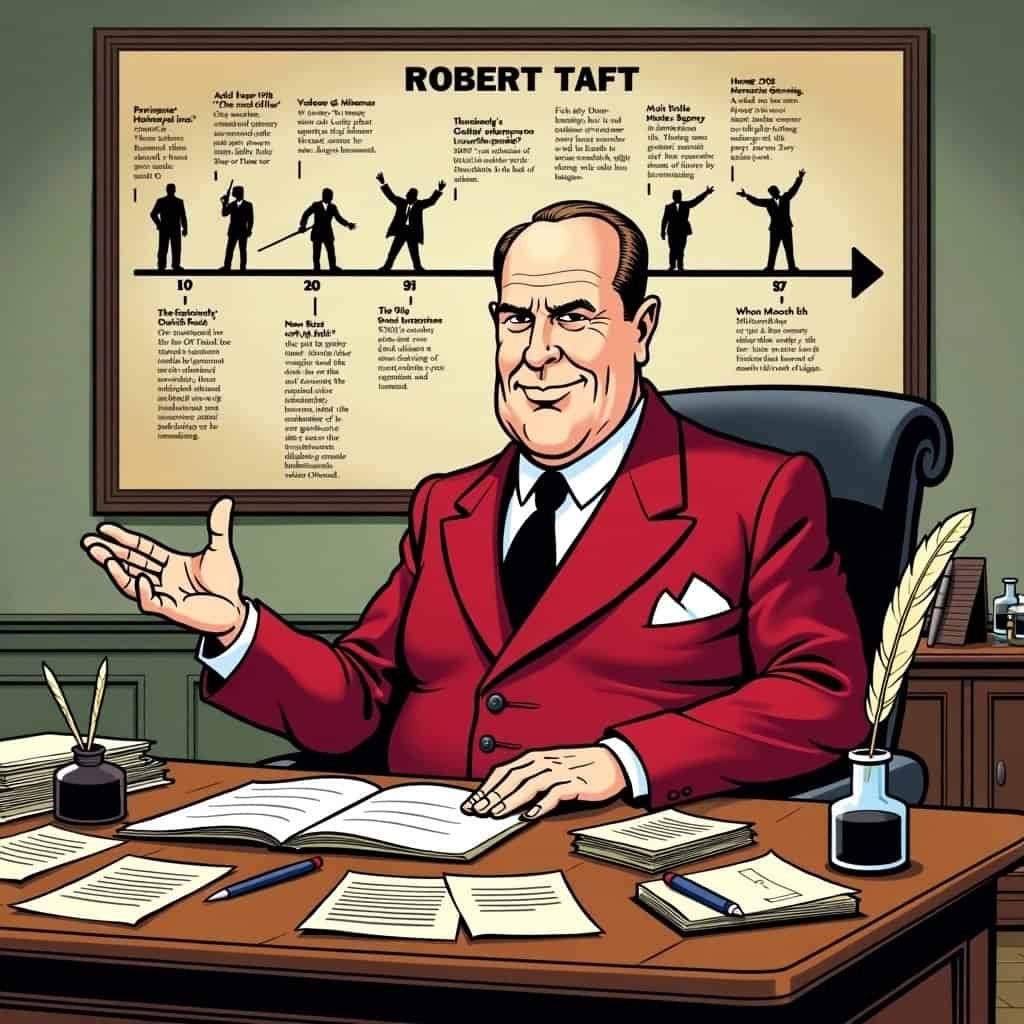Imagine stepping back in time to when Robert Taft ruled the Senate roost. They called him “Mr. Conservative,” and for good reason. Every time he opened his mouth, you could almost hear the Constitution fluttering in the background! Taft wasn’t just any old politician; he was the champion of private property rights, treating them like they were the last slice of apple pie at a Fourth of July picnic.
Picture this scene: It’s the mid-1900s, and America’s going through more changes than a teenager’s wardrobe. From income taxes popping up like unwanted acne to the Great Depression leaving everyone feeling like they’d been stood up at prom, and then the post-war boom making wallets fatter than a Thanksgiving turkey. In the middle of all this chaos stood Robert Taft, as unmovable as a stubborn mule, fighting off progressive policies that treated property rights like an optional extra on a new car.
Taft’s Balancing Act: Government vs. Liberty
Taft was like a master chef, whipping up the perfect recipe of government intervention and individual freedom. He knew that too much government was like too much salt in your soup – it ruins the whole dish. In his cookbook, less government meant more room for people to cook up their own success stories.
Taft’s Recipe for American Prosperity
- A pinch of government intervention
- A heaping cup of individual liberty
- A tablespoon of low taxes
- A dash of minimal regulation
- Mix well and let the economy rise!
You might be wondering, “Why should I care about my home being my castle when the government’s acting like it owns the whole kingdom?” Well, while the Democrats were busy playing Robin Hood with people’s wallets, Taft was there asking if we were trying to turn the economy into a medieval fair. He knew the secret wasn’t about fighting over the last crumb of the economic pie, but baking a bigger one that everyone could dig into!
Taft’s Philosophy: A Bootstrap Bonanza
Taft’s conservative values weren’t about hoarding gold like a dragon. No siree! He wanted everyone to have a shot at filling their own treasure chest. It was all about rolling up your sleeves, putting your nose to the grindstone, and watching the economy grow faster than a beanstalk in Jack’s backyard. And he believed this would happen not through an army of government workers, but through good old-fashioned American grit.
Imagine Taft in a smoky backroom (because apparently, that’s where all the important conversations happened back then). Someone might say, “Taft, if your beliefs were a house, they’d be built like Fort Knox!” And they’d be right on the money. His stance on private property rights was wrapped up tighter than a Christmas present, with a bow made of low taxes, minimal red tape, and enough space for the economy to pull rabbits out of hats – if those rabbits were made of cold, hard cash.
Taft’s Legacy: More Than Just Hot Air
Taft didn’t just talk the talk; he walked the walk, even if it meant stepping on a few governmental toes. His work in Congress was like a constant game of tug-of-war against big government overreach. He knew that when Uncle Sam tries to be everyone’s daddy, it usually ends up with the country throwing a temper tantrum. Taft believed that if the government took a step back, the people would leap forward, proving that betting on the average Joe is always a safer bet than relying on bureaucratic Bob.
So, what’s the takeaway from Taft’s playbook? It’s simple: Guard those property rights like a dog with a bone, keep the government’s sticky fingers out of your pockets, and watch the nation bloom like a field of red, white, and blue wildflowers. As conservatives, we tip our hats to the likes of Taft, who laid down the tracks for the freedom train we’re still riding today!
Table of Contents
- Taft’s Balancing Act: Government vs. Liberty
- Taft’s Philosophy: A Bootstrap Bonanza
- Taft’s Legacy: More Than Just Hot Air

